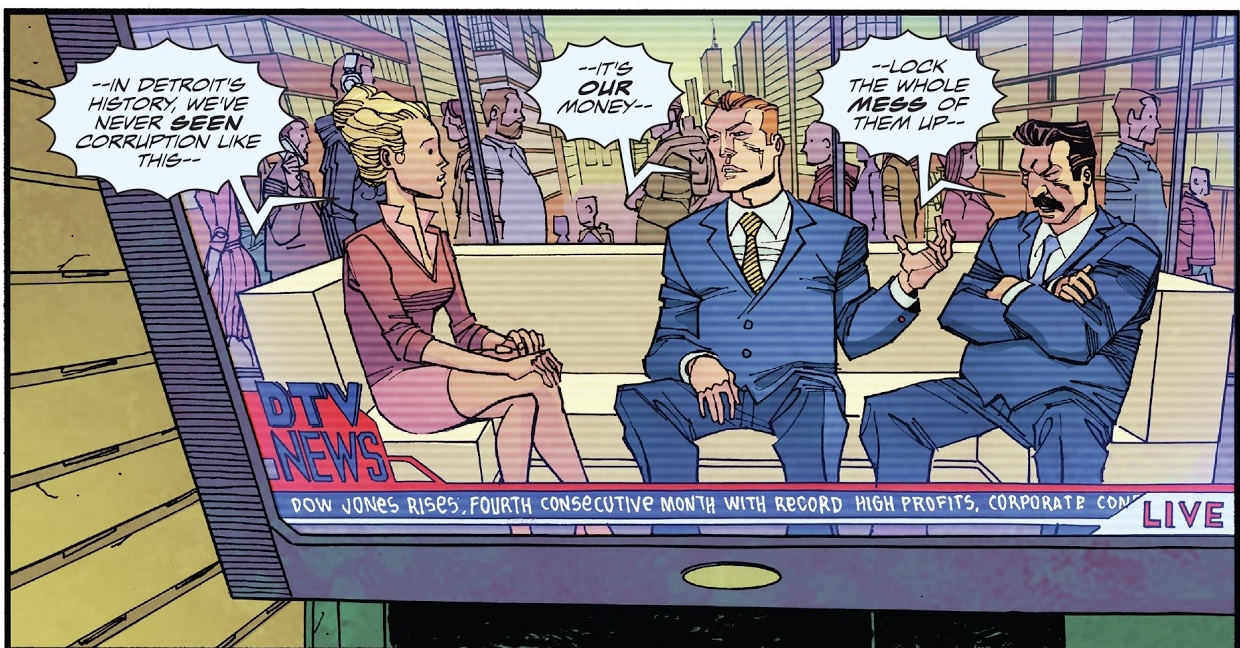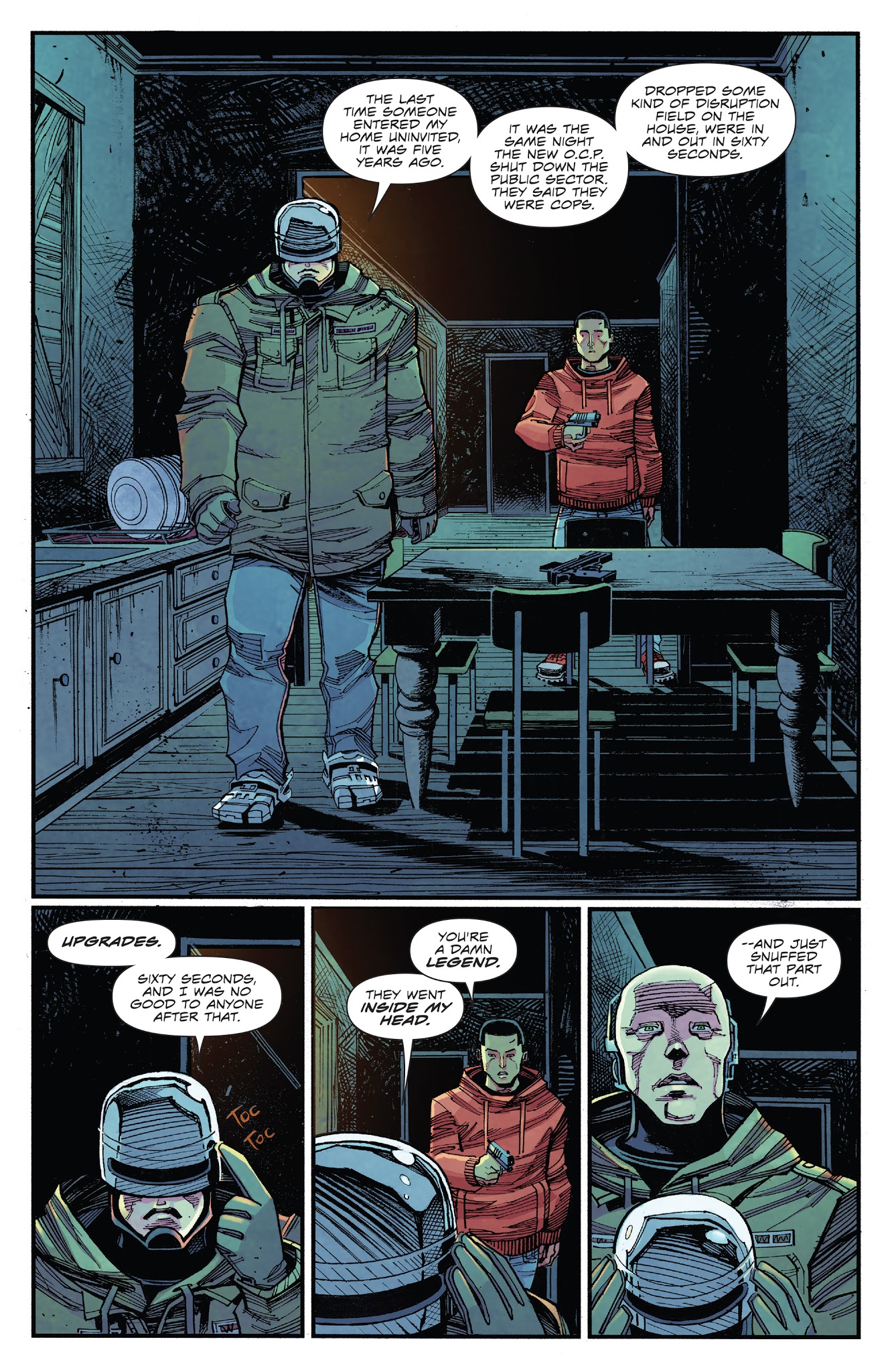Robocop: Citizen’s Arrest #1 Review: Is That Alex Murphy?
Robocop: Citizens Arrest, from Boom! Studios, written by Brian Wood and illustrated by Jorge Coelho with colors by Doug Garbank, is the newest installment in the long line of comic books based on the extremely violent film Robocop. Is this new story another cash grab, or is their first prime directive really to serve the fan’s trust?
The comic opens a few years after the events of the Robocop films. Readers quickly learn that history is on the verge of repeating itself, as the new owner of Omni Consumer Products (O.C.P.) has privatized and disbanded the Detroit police department. The comic cuts to five years later. Expansions have been made, creating a metropolitan utopia in a major part of Detroit, and those that cannot afford to live in the new Detroit live in a run-down neighborhood affectionately referred to as “The Ruins.”
O.C.P. has recently released their newest measure in law enforcement; the RCOP app. This app allows people to pay a small fee to report a crime in progress. If a successful arrest is made based on the information provided, then the app gives the user a payout up to five times their initial investment. These reports are verified and processed by robotic police officers that patrol the streets.
Former Detroit police officer and father, Leo, learns the whereabouts of Alex Murphy, the Robocop, and decides to pay him a visit. There, Leo learns that O.C.P. has rendered Alex non-operational and unable to defend himself.
Writer, Brian Wood, does an excellent job in setting the stage for this new Robocop story. Some of the more notable work from this five time Eisner Award winner has been on DMZ, Brigg’s Land, and Northlanders. In this new comic series, it’s safe to assume that the only things that are considered cannon are the events of the original Robocop movies. This means that there will be little to no references to the 2014 reboot, no additional Robocops, per the television miniseries, and definitely no terminators. This approach makes the book incredibly accessible to new readers. The comic has only about one page of exposition recapping the origin of the titular Robocop. The rest of the comic does wonders in terms of worldbuilding, telling the reader about the state of law enforcement, government, and how much influence O.C.P. has.
The art of the comic is stylized in such a way that lends itself to the overall feel of the story, and a good portion of that can be attributed to colorist Doug Garbark. In the more down-and-out parts of The Ruins, colors are darker and the scene is drenched in heavy crosshatched shadows, but in the new areas of Detroit the lighting is brighter and the colors are more inviting, with a near saturation of bubblegum pink. The harsh tones of the Ruins lend themselves well to how the characters are drawn and allow for their expressions to really shine through. There is something aesthetically pleasing about seeing how the brightly colored CEO of O.C.P. always wears the same smile, as opposed to the look of existential horror on the defunct Alex Murphy’s face as he sits alone in his room.
This comic is a far cry different that the Frank Miller Robocop comics that lead to the creation and development of the Robocop sequels. It feels like a decent continuation of the Robocop storyline, with all the regular characters feeling like their old selves, and the portrayal of the American consumer just as snarky and mean spirited as ever. Any fan of Robocop should look into this comic and stick around to see where the plotline goes. The book isn’t perfect, but it shows promise, and it could easily become another great addition to the Robocop comic pantheon.









